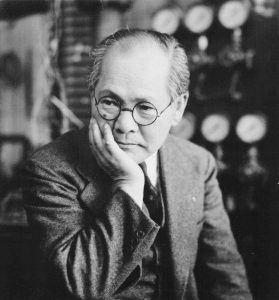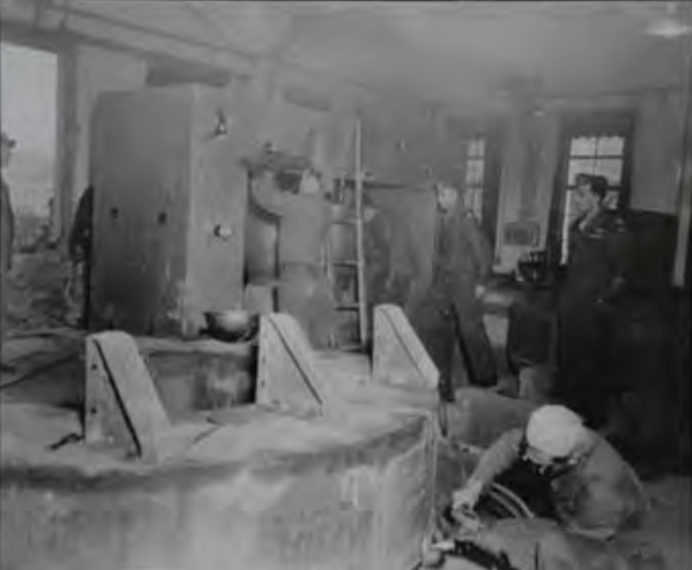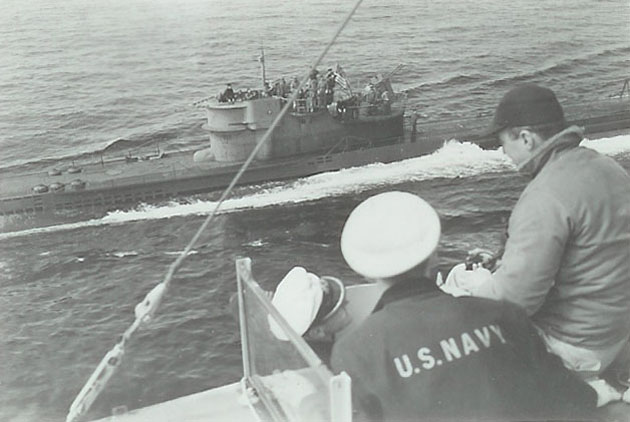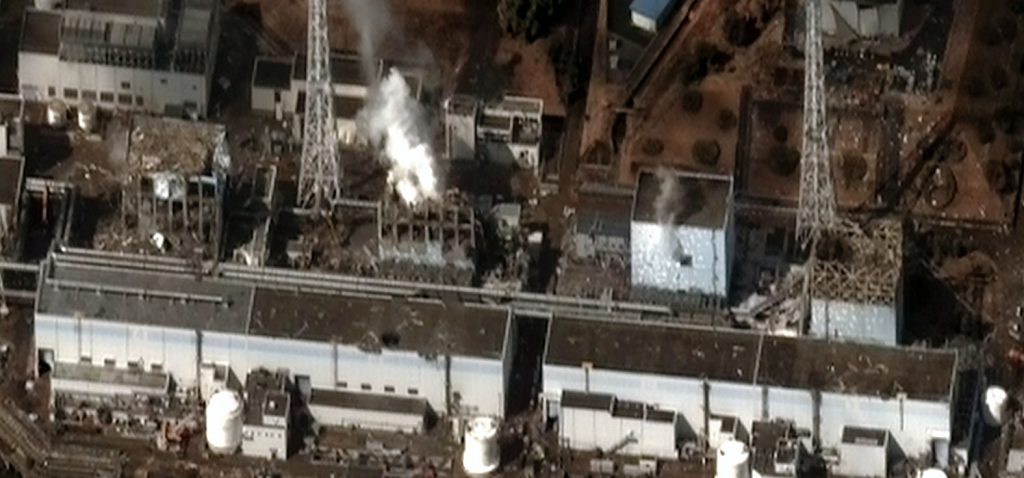The Manhattan Project was not the only effort to create an atomic bomb during World War II. Much of the theory behind fission had been published before the war and was internationally available. In addition to the British research that helped jumpstart the Manhattan Project, and the unsuccessful German efforts uncovered by the Alsos Mission, there was a small and ultimately fruitless attempt by the Japanese to create an atomic weapon. The Japanese military invested in various efforts to research the potential technology, and created technology for uranium enrichment (including several cyclotrons and a thermal diffusion device). But Japan never enriched enough uranium to make a weapon, or developed the detonation technology that went into the American atomic bombs.
Many of the details of the project remain unclear, and new documents have only come to light in recent years. Discussions and debates over the extent of Japan’s bomb program continue today, perhaps because there is fascination about atomic research in the country that would become the most prominent victim of atomic weapons.
The Japanese Bomb Effort: Ni-Go and F-Go
Historians generally cite a report from October 1940, penned by Tatsusaburo Suzuki, as the beginning of the Japanese atomic bomb research effort. The report was commissioned by Lieutenant General Takeo Yasuda of the Imperial Japanese Army (IJA), a former engineer who was intrigued by the discovery of nuclear fission. Suzuki’s report stated that it would be possible to construct an atomic weapon. Even at that early stage, uranium procurement was identified as a crucial problem.
 Yasuda contacted physicist Yoshio Nishina, later known as the Japanese “father of nuclear physics,” who had studied under Niels Bohr in Copenhagen. Nishina worked at the institute known as RIKEN, near Tokyo. He succeeded in building the first cyclotron outside the United States in 1937, and completed a larger one in 1944, both with the assistance of Ernest Lawrence. The IJA officially authorized Nishina’s lab to research an atomic bomb in April 1941. The project became known as Ni-Go.
Yasuda contacted physicist Yoshio Nishina, later known as the Japanese “father of nuclear physics,” who had studied under Niels Bohr in Copenhagen. Nishina worked at the institute known as RIKEN, near Tokyo. He succeeded in building the first cyclotron outside the United States in 1937, and completed a larger one in 1944, both with the assistance of Ernest Lawrence. The IJA officially authorized Nishina’s lab to research an atomic bomb in April 1941. The project became known as Ni-Go.
Ni-Go had five “research themes”: atomic bomb theory, separation of uranium-235, production of uranium hexafluoride, measurement of physical constants, and analysis of isotopes. Nishina’s team’s initial conclusion was that an atomic bomb was theoretically, but not technically, feasible. Though they continued to pursue uranium enrichment via gaseous thermal diffusion, their focus shifted away from just researching how to create an atomic bomb. Some historians have asserted that Nishina may have used the military’s focus on weaponry to get funding for the cyclotrons, his pet project. An exchange between Nishina and his military liaison, Major General Nobuji (or Nobuuji), exemplifies military leaders’ lack of scientific understanding of the project:
Nobuuji: If uranium is to be used as an explosive, 10 kg is required. Why not use 10 kg of a conventional explosive?
Nishina: That’s nonsense.
 RIKEN was hit by Allied bombing in April 1945, destroying their thermal diffusion device, and interrupting the research there. After the Japanese surrender, Allied forces captured paperwork and cyclotrons from Ni-Go. Nishina was originally granted permission to continue using the cyclotrons for biological and medical research in October 1945. But a month later, orders came from the Secretary of War to destroy every Japanese cyclotron (not just those in Tokyo). The ones from RIKEN were disassembled and thrown into the Gulf of Tokyo.
RIKEN was hit by Allied bombing in April 1945, destroying their thermal diffusion device, and interrupting the research there. After the Japanese surrender, Allied forces captured paperwork and cyclotrons from Ni-Go. Nishina was originally granted permission to continue using the cyclotrons for biological and medical research in October 1945. But a month later, orders came from the Secretary of War to destroy every Japanese cyclotron (not just those in Tokyo). The ones from RIKEN were disassembled and thrown into the Gulf of Tokyo.
Nishina also participated in a committee convened by the Technical Research Institute of the Imperial Japanese Navy (IJN) to explore whether developing the bomb was feasible. The IJN worked separately from the IJA on atomic research for much of the war, due to animosity between the two military branches. The committee was headed by Captain Yoji Ito, and met several times between July 1942 and March 1943. It concluded that the US was probably working on a bomb, but that neither it nor Germany could complete one during wartime. The committee pegged their estimate for how long it would take Japan at 10 years, and disbanded after this pessimistic conclusion.
A different part of the IJN started a project referred to as F-Go, under the direction of Bunsaku Arakatsu, a physics professor at Kyoto Imperial University who had also studied in Europe, including with Albert Einstein. At the beginning of the project in 1942-43, Arakatsu received less than $80,000 in funding, showing how low a priority it was. Arakatsu and his lab pursued uranium enrichment with centrifuges. Toward the war’s end, the IJA and IJN joined forces, but F-Go was nowhere close to success.
Obstacles: Prioritization and Uranium
A number of factors contributed to the lack of success of the Japanese project, including Allied bombing and lack of information-sharing with Germany. In contrast, American and British scientists worked together on the Manhattan Project. However, the main obstacles were prioritization and issues with uranium supply. The Japanese military did not consider atomic bomb development a necessity the way American decision-makers did, as evidenced by the low level of funding and the diversion of resources to other areas of research. Captain Ito, for example, turned his focus to radar and other electronic weapons.
 By 1945, Japan had started to develop multiple strategies for uranium enrichment. There was the thermal diffusion device at RIKEN that was destroyed by Allied bombings. Blueprints have been found at Kyoto University for turbine-based centrifuges, including one that was scheduled for completion in August 1945. The major obstacle to enrichment, however, was uranium procurement. Missions were sent to various parts of Asia, even to Mongolia and Burma, without finding useful uranium ore. On this front, there was some cooperation between the Axis powers: in 1945, as Germany was falling to the Allies, a U-boat loaded with uranium was dispatched to Japan. Allied naval forces captured the submarine before it arrived, but the amount of uranium being transported was not enough to make a bomb.
By 1945, Japan had started to develop multiple strategies for uranium enrichment. There was the thermal diffusion device at RIKEN that was destroyed by Allied bombings. Blueprints have been found at Kyoto University for turbine-based centrifuges, including one that was scheduled for completion in August 1945. The major obstacle to enrichment, however, was uranium procurement. Missions were sent to various parts of Asia, even to Mongolia and Burma, without finding useful uranium ore. On this front, there was some cooperation between the Axis powers: in 1945, as Germany was falling to the Allies, a U-boat loaded with uranium was dispatched to Japan. Allied naval forces captured the submarine before it arrived, but the amount of uranium being transported was not enough to make a bomb.
Ironically, North Korea later exploited uranium deposits in the Hungnam region, which had been a center of Japanese industry during World War II. The connection between Hungnam and nuclear weapons production has fueled conspiracy theories about a secret Japanese program there.
As a result of these roadblocks, Japan did not come close to building a bomb. The US sent a mission to Japan in the aftermath of the war to see what their progress had been on an atomic weapon. Robert Furman, who participated in that mission, recounted how none of the project components were nearly on the scale of US facilities like Oak Ridge. Furman said about the mission in a 2008 interview:
Don’t forget, if they had a project, we knew it would have to be a tremendous project like Oak Ridge. If somebody showed us a 40,000 foot warehouse and said that was their project, why, we felt pretty safe because Oak Ridge was a million feet. Our project was half the size of the state of Rhode Island. As far as we knew, nobody could do it any quicker or any faster.
…
From this, we could make our report back that there was no serious project. I think that report has stood up under questioning over the years. Every once in a while, someone wants to write an article saying a secret plant was producing atomic bombs. This we could easily check out and force them to remove the report.
To hear more from Robert Furman about the mission, click here.
The Situation Today
 Some have asked what Japan would have done had it obtained an atomic bomb during World War II. Would it have used it on an enemy civilian population, as the US did? The Japanese government did send a letter to the US after the bombing of Nagasaki, declaring the atomic bomb a violation of the Hague Convention and a crime against humanity. Nevertheless, there are some indications that Japan would have acted in a similar manner, had their atomic project succeeded, though it is impossible to say definitively one way or the other.
Some have asked what Japan would have done had it obtained an atomic bomb during World War II. Would it have used it on an enemy civilian population, as the US did? The Japanese government did send a letter to the US after the bombing of Nagasaki, declaring the atomic bomb a violation of the Hague Convention and a crime against humanity. Nevertheless, there are some indications that Japan would have acted in a similar manner, had their atomic project succeeded, though it is impossible to say definitively one way or the other.
Some historians have argued that the US was more willing to use its atomic bombs because it had already conducted extensive bombing raids. Japan was no stranger to bombing civilian targets, since it did so in China and (to a lesser extent) Australia. However, the Japanese did not do nearly as much bombing as the US did.
Yoichi Yamamoto, an IJA officer who worked on uranium procurement, defended the dropping of the atomic bombs as a wartime necessity. Japan also showed willingness to attack civilians, such as atrocities committed against civilians during their conquest of China. Japan even caused civilian fatalities in the US, albeit on a much smaller scale, during the attacks on Pearl Harbor and via explosives sent by balloon to the West Coast. The fact that their government pursued an atomic bomb and might have used it is troubling to some Japanese citizens, especially since the project is absent from many museums, textbooks, and other historical sources.
Today, Japan is one of the world’s most technologically advanced nations, and has invested a great deal in nuclear energy. It has not pursued weaponizing that technology, however, since World War II. Part of this is due to the pacifist constitution that was ratified after the war, limiting the Japanese military to self-defense forces. Japan subsequently adopted a three-point policy of not possessing, producing, or allowing entry of nuclear weapons, and later ratified the Nuclear Non-Proliferation Treaty. Wariness of nuclear technology in general has increased since the incident at Fukushima in 2011.

There have been rumblings of change in Japanese policy in recent years, corresponding with the increasingly threatening presence of nuclear-state neighbors China and North Korea. After North Korea announced a resumption of its nuclear program in 2009, former Finance Minister Shoichi Nakagawa gave a speech saying that Japan should develop nuclear weapons as a check, though the government condemned his statement. As recently as 2014, anonymous statements from government officials confirm that Japan has “a bomb in the basement,” i.e. the capability to produce a nuclear weapon in a short space of time.
Conspiracy Theories
There is a vocal group of people who have stated that there was another component to the Japanese bomb effort. The theory is that Japan completed and tested an atomic bomb in Hungnam in the days before the end of the war. The remnants of the Japanese program, the theory says, sped up the development of nuclear weapons by the Soviet Union, which occupied Hungnam, and eventually North Korea. This idea (promulgated by a 2005 History Channel show entitled Japan’s Atomic Bomb) originates from a 1946 article in the Atlanta Constitution that cites one pseudonymous source, “Captain Wakabayashi,” who reportedly witnessed the Hungnam detonation (read the article here).
Some advocates of this theory have argued that the Japanese government hid evidence of the extent of their atomic program in order to maintain the narrative of their victimhood. The proponents of this line of argument claim that Japan was no better than the US, despite the American use of its bombs on Hiroshima and Nagasaki.
There were important Japanese industrial sites in Hungnam, which were captured by the Soviets. And the USSR did develop an atomic bomb sooner than was thought possible. But there is no hard evidence that the Japanese were doing any atomic bomb research or production in Korea, and many attribute the Soviets’ accelerated timeline to information gleaned from spies in the US.




